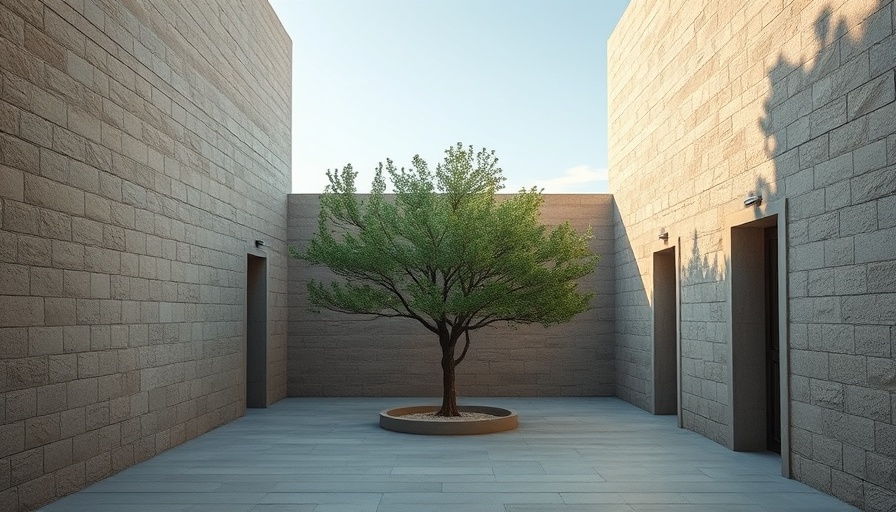
Discovering the Blend of Design and Nature
In the heart of Todos Santos, Mexico, a new rammed-earth guesthouse designed by the architectural studio PPAA captures the essence of a seamless connection between architecture and the surrounding desert landscape. Commissioned by Danish homeware brand Vipp, this stunning guesthouse serves as more than just a place to stay; it embodies a philosophy of sustainability and comfort, tailored for modern digital nomads looking to escape the hustle of urbanity while staying productive.
Why Rammed Earth? The Case for Sustainable Materials
Rammed earth offers a unique combination of aesthetics and functionality, blending harmoniously with its environment. As Pablo Pérez Palacios, the creative director of PPAA, aptly notes, "Rammed earth was a natural choice – not only does it blend seamlessly with the terrain, but it also serves as a highly efficient thermal mass, keeping the interiors cool during the day and warm at night." This feature is particularly beneficial for digital nomads who may spend long hours working indoors. The temperature regulation decreases reliance on artificial heating and cooling, thereby enhancing comfort and productivity.
Emphasizing Space for Connection
The guesthouse is segmented into three distinct yet connected volumes, thoughtfully arranged around a central courtyard. This layout fosters both privacy and community—two vital components when balancing work and leisure. For the remote worker, having spaces that offer an escape for focus, as well as areas conducive to relaxation and social interaction, is essential. The addition of spacious outdoor terraces allows for essential breaks that can help rejuvenate the mind and spark creativity.
Natural Ventilation and Dynamic Design
In addition to its beautiful façade, the guesthouse employs a carefully considered design for natural ventilation and light. Sliding screens made from the woven branches of the Palo de Arco tree grant occupants control over airflow while maintaining an intimate yet open atmosphere. This flexibility resonates with the needs of digital nomads, allowing them to tailor their environments based on their daily routines. Whether one seeks a bright space to brainstorm or a dimmed area for focused work, this design accommodates it all.
Maximizing Productivity with Thoughtful Interiors
The interior features exposed rammed-earth walls complemented by locally sourced stone and bespoke Vipp furniture, creating a serene and inspiring workspace. By combining elements of nature with ergonomic design, PPAA has provided a setting that not only meets the physical needs of remote workers but also promotes a sense of well-being essential for prolonged productivity. Choosing ergonomically designed furniture, such as adjustable desks and supportive chairs, further elevates the workspace experience.
Creating a Retreat for Reflection
Elevating the experience, the rooftop terraces, including a striking circular swimming pool, invite moments of contemplation. Such environments are crucial for mental decompression, allowing digital nomads to disconnect momentarily from work stresses and to reconnect with nature. The panoramic views of desert, ocean, and sky from these heights provide a fitting backdrop for inspiration, leading to breakthrough ideas during well-deserved breaks.
Final Thoughts: The Guesthouse as a Model for Modern Workspaces
The guesthouse in Todos Santos stands as a testament to the possibilities of modern architecture that works in harmony with nature while catering to the evolving needs of remote workers. By seamlessly integrating shelter and openness, PPAA has created a sanctuary where productivity and tranquility coexist. This model serves as an inspiration for other digital nomads seeking the perfect balance between work life and downtime.
If you're inspired to explore creating your own efficient remote workspace, consider elements from this stunning guesthouse. The thoughtful use of materials, balance of space, and incorporation of nature can transform not just your work environment but also your overall well-being.
 Add Row
Add Row  Add
Add 




Write A Comment